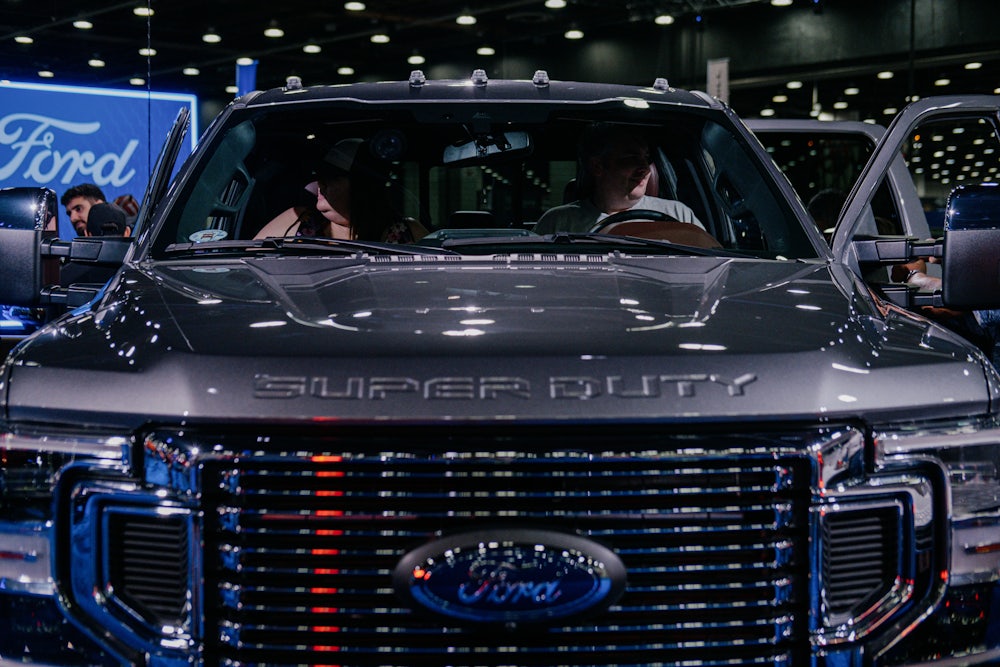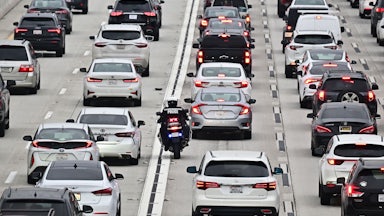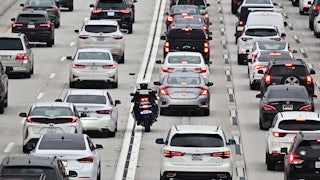Early Sunday morning, 34-year-old George Alvarez crashed his Range Rover into a crowd gathered around a bus stop outside a shelter for migrants and unhoused people in the Texas border city of Brownsville. Eight people were killed and 10 were critically injured. Most of the victims are believed to be Venezuelan migrants who were heading downtown. Alvarez is being charged with eight counts of manslaughter and 10 counts of aggravated assault with a deadly weapon.
Officials haven’t determined whether Alvarez—now in police custody—had a political motive. Survivors reported that he yelled anti-immigrant expletives at them while approaching, while subsequent reports highlight that Alvarez had run a red light and lost control of the vehicle. Brownsville police have emphasized his extensive criminal record, which began with his spending four years in prison as a teenager after being wrongfully convicted of assaulting a corrections officer. The incident took place days before a pandemic-era border restriction (Title 42) is due to expire, as an increasing number of migrants from Central America have crossed the Southern border into Texas.
Understandably, given how few details are known at this point, the White House has yet to release a statement on the crash. But that contrasts sharply with its response to a different tragedy the same day on the other side of Texas, when a shooter in black tactical gear killed nine people with an AR-15 at an outlet mall north of Dallas. (The suspect, who was killed on site, posted white supremacist memes on his social media profile. As in the Brownsville case, officials have yet to determine if the shooting was an act of domestic terrorism.) In the aftermath of the Allen shooting, Biden requested that Congress send him legislation that would ban assault rifles like the one used on Sunday, noting that “the leading cause of death for American kids is gun violence.”
That statistic is a relatively recent development. Car crashes had claimed that top slot for decades until 2022. And as the charges against Alvarez suggest, cars—particularly big ones like the Range Rover Alvarez was driving—quite frequently become deadly weapons. They’re seldom described as such, despite plenty of evidence of their lethality.
Cars remain a prolific killer of children and adults. Pedestrian deaths have risen 54 percent over the last decade, reaching a 40-year high. By way of comparison, overall traffic deaths have increased by 13 percent over the same time period. Even as travel declined over the pandemic, traffic deaths continued to rise, bucking the trend of other rich countries that have managed to curb car-related fatalities.
Where other governments have taken steps to protect pedestrians and cyclists—demanding certain design changes to reduce injury and increase visibility, building in bike lanes, and cutting speed limits—federal safety ratings for cars focus on protecting those inside vehicles, not outside. U.S. cars, meanwhile, are getting bigger and deadlier. While massive trucks and SUVs are sold with the promise of protecting passengers and their families, the kind of higher, heavier vehicles that now make up some 80 percent of new car sales in the U.S. are more likely to cause traumatic head and chest injuries upon impact. Reduced visibility means they are more likely to hit pedestrians while at an intersection. A study released earlier this month by the Insurance Institute for Highway Safety found that SUVs cause more severe injuries to bikers. Electric vehicles, troublingly, trend even heavier thanks to the weight of their batteries. Smaller ones are a small minority of those that qualify for the full slate of federal incentives offered by the Inflation Reduction Act.
Whether what happened in Brownsville was a deliberate attack or a tragic accident is important to determine. The broader trend of vehicular deaths is important regardless. Though there’s an increasing willingness among Democratic politicians in the wake of mass shootings to discuss the dangers of proliferating military-style weapons, mounting car-related fatalities haven’t prompted a national reckoning with the spread of vehicles inspired by battlefields.
Cars occupy a blind spot in our national psyche, thanks in part to just how ubiquitous and necessary they are. Rather than calling for commonsense reforms that might place limits on gargantuan cars, the White House has made them a star player in its approach to climate policy. GMC’s 9,000-pound electric Hummer—too expensive to qualify for IRA tax credits, with a battery that weighs as much as a Honda Civic—has gotten star treatment from both the Department of Energy and Joe Biden, who took one for a well-publicized joyride last year. Just two sedans currently qualify for full electric vehicle tax credits furnished by the IRA, and one was just canceled; new federal spending on public transit is comparatively modest.
This national reluctance to recognize cars as dangerous is a bit odd given how readily corporations market them as weapons. Automakers regularly promise to turn their drivers into superheroes or soldiers. “When you take the wheel you experience super strength and supercharged horsepower,” boasts a recent ad for the 6,200-pound Cadillac Escalade-V Performance SUV. “Just like those masked vigilantes have their high-class hideouts and their ingenious gadgets, so do you.” A 2012 Dodge campaign imagined a fleet of American-flag-sporting Challengers—popular among police departments—defeating the British in the Revolutionary War. A few years later one manned by an avowed neo-Nazi plowed into a crowd of counterprotesters at the “Unite the Right” rally in Charlottesville, Virginia, killing 32-year-old paralegal Heather Heyer.
Earlier pitches for SUVs—beginning with the Jeep—leaned explicitly on their military legacy, finding the most purchase among affluent suburbanites. As historian David Campbell noted in 2005, Ford designed its Explorer—the car that kicked off the modern SUV boom with its 1986 launch—by “paying special attention to the evolving values of the baby boomer generation,” who were eating up militaristic action films like Top Gun and Rambo: First Blood Part II as the right stoked fears over crime rates and a Satanic panic. With the advent of the “war on terror,” sport utility vehicles promised civilians the chance to do their part in the government’s fight against the “axis of evil.” “With names like Tracker, Equinox, Freestyle, Escape, Defender, Trail Blazer, Navigator, Pathfinder, and Warrior, SUVs populate the crowded routes of daily life with representations of the militarized frontier,” Campbell added.
Corporations now see plenty of upsides in consumers wanting to enclose themselves in high-tech fortresses—whether through actual guns, Ring car cameras, or an SUV that comes equipped with a gas mask and pepper spray. It shouldn’t come as much of a surprise, however, that the types of cars first built to navigate foreign war zones encourage drivers to treat pedestrians like enemy combatants. As people get killed by self-appointed vigilantes for pulling into the wrong driveway or being loud on the subway, it’s only natural that people buying cars that promise to protect against unwanted outsiders may start to treat those cars like weapons.
The old adage from the gun lobby has been that “guns don’t kill people, people kill people.” Gun reform advocates—and many Democratic politicians—have argued against that thesis for decades, insisting that some devices need to be regarded as inherently dangerous. At what point is it appropriate to extend this logic to cars? It’s an uncomfortable question, but the raw figures should be even more troubling.










